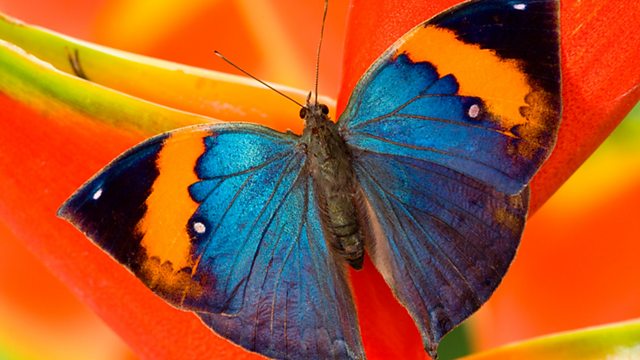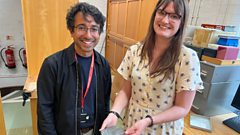Why am I symmetrical?
Why is one side of the human body pretty much a mirror image of the other side? Anand Jagatia finds out why animals evolved bilateral symmetry as the ideal body plan
Why do we have two eyes? Two ears? Two arms and two legs? Why is one side of the human body – externally at least – pretty much a mirror image of the other side?
CrowdScience listener Kevin from Trinidad and Tobago is intrigued. He wants to know why human beings – and indeed most animals - have a line of symmetry in their bodies. Yet, beyond their flowers and fruits, plants don’t seem to have any obvious symmetry. It seems that they can branch in any direction.
Anand Jagatia sets out to find out why the animal kingdom settled on bilateral symmetry as the ideal body plan. And it takes him into the deep oceans of 570 million years ago. Paleobiologist Dr. Frankie Dunn is his guide to a time when animal life was experimenting with all sorts of different body plans and symmetries.
Frankie shows Anand a fossil of the animals which changed everything. When creatures with bilateral symmetry emerged they began to re-engineer their environment, outcompeting everything else and dooming them to extinction.
Well... nearly everything else. One very successful group of animals which have an utterly different symmetry are the echinoderms. That includes animals with pentaradial - or five-fold - symmetry like starfish and sea urchins. And that body shape poses some intriguing questions... like “where’s a starfish’s head?” Dr. Imran Rahman introduces us to the extraordinary, weird world of echinoderms.
To answer the second part of Kevin’s question - why plants don’t seem to have symmetry – Anand turns to botanist Prof. Sophie Nadot. She tells him that there is symmetry in plants... you just have to know where to look! Beyond flowers and fruits, there’s also symmetry in a plants leaves and stem. The overall shape of a plant might start out symmetrical but environmental factors like wind, the direction of the sun and grazing by animals throws it off-kilter.
And, while the human body may be symmetrical on the outside, when you look inside, it’s a very different story. As listener Kevin says, “our internal organs are a bit all over the place!” Prof. Mike Levin studies the mechanisms which control biological asymmetry. He tells Anand why asymmetry is so important... and also why it’s so difficult to achieve consistently.
Contributors:
Dr. Frankie Dunn, Oxford University Museum of Natural History, UK
Dr. Imran Rahman, Natural History Museum, London, UK
Prof. Sophie Nadot, Université Paris-Saclay, France
Prof. Mike Levin, Tufts University, Massachusetts, USA
Presenter: Anand Jagatia
Producer: Jeremy Grange
Editor: Cathy Edwards
Production Co-ordinator: Ishmael Soriano
Studio Manager: Andrew Garratt
(Image: Orange oakleaf butterfly (Kallima inachus) on tropical flower, Credit: Darrell Gulin/The Image Bank via Getty Images)
Last on
More episodes
Clip
-
![]()
Bilaterians Dominate!
Duration: 03:04
Featured
-
.
Broadcasts
- Fri 23 Aug 2024 19:32GMT���˿��� World Service
- Mon 26 Aug 2024 01:32GMT���˿��� World Service
- Mon 26 Aug 2024 04:32GMT���˿��� World Service Australasia, Americas and the Caribbean, South Asia & East Asia only
- Mon 26 Aug 2024 08:32GMT���˿��� World Service
- Mon 26 Aug 2024 12:32GMT���˿��� World Service East and Southern Africa, News Internet & West and Central Africa only
Podcast
-
![]()
CrowdScience
Answering your questions about life, Earth and the universe



